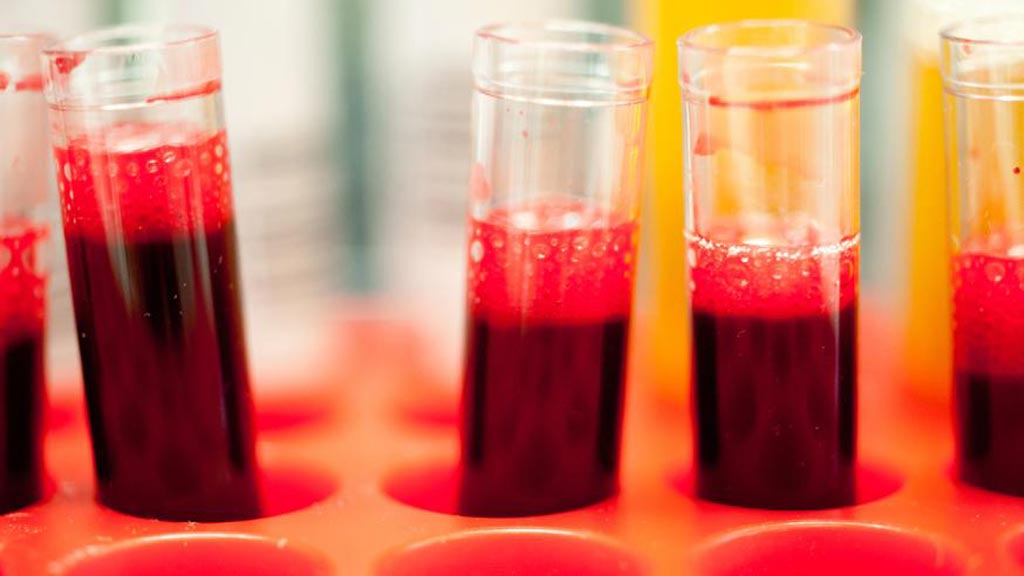Three-In-One Blood Test Could Fuel Personalized Prostate Cancer Treatment
By LabMedica International staff writers
Posted on 06 Jul 2017
A three-in-one blood test has been developed that can predict a patient's response to Poly ADP ribose polymerase (PARP) inhibitors, as well as how well the drugs may impact survival, and how likely patients are to develop drug resistance.Posted on 06 Jul 2017
Prostate cancer is the most common cancer among men in the USA, after skin cancer and, around 161,360 new cases of prostate cancer will be diagnosed in the USA this year, and more than 26,000 men will die from the disease.

Image: Blood samples being prepared for the Three-In-One Blood Test that predicts a patient\'s response to PARP inhibitors (Photo courtesy of The Institute of Cancer Research).
Scientists at The Institute of Cancer Research (London, UK) and their colleagues, analyzed the levels of cancer DNA that were circulating in the blood of 49 men with advanced prostate cancer, of whom 16 responded to treatment with a PARP inhibitor called olaparib. The team used targeted and whole-exome sequencing of serial circulating free DNA (cfDNA) samples collected during this trial. Inherited gene mutations account for around 5% to 10% of prostate cancer cases. A small number of inherited cases are caused by mutations in genes that normally help to repair damage to a cell's DNA, such as BRCA1 and BRCA2 genes.
The team found that among men who responded to the drug, they identified a median 49.6% drop in circulating cancer DNA after eight weeks of treatment. However, men who did not respond to olaparib showed a median increase in circulating cancer DNA of 2.1% after eight weeks of treatment. This finding indicates that levels of circulating cancer DNA could help doctors to pinpoint which patients are most likely to respond to PARP inhibitors. If response rates appear low, patients could be switched to an alternative treatment in a matter of weeks.
Johann S. de Bono, MD, PhD, a professor and senior author of the study, said, “We were able to develop a powerful, three-in-one test that could in future be used to help doctors select treatment, check whether it is working and monitor the cancer in the longer term. We think it could be used to make clinical decisions about whether a PARP inhibitor is working within as little as four to eight weeks of starting therapy. Not only could the test have a major impact on treatment of prostate cancer, but it could also be adapted to open up the possibility of precision medicine to patients with other types of cancer as well.” The study was published on June 18, 2017, in the journal Cancer Discovery.
Related Links:
The Institute of Cancer Research














